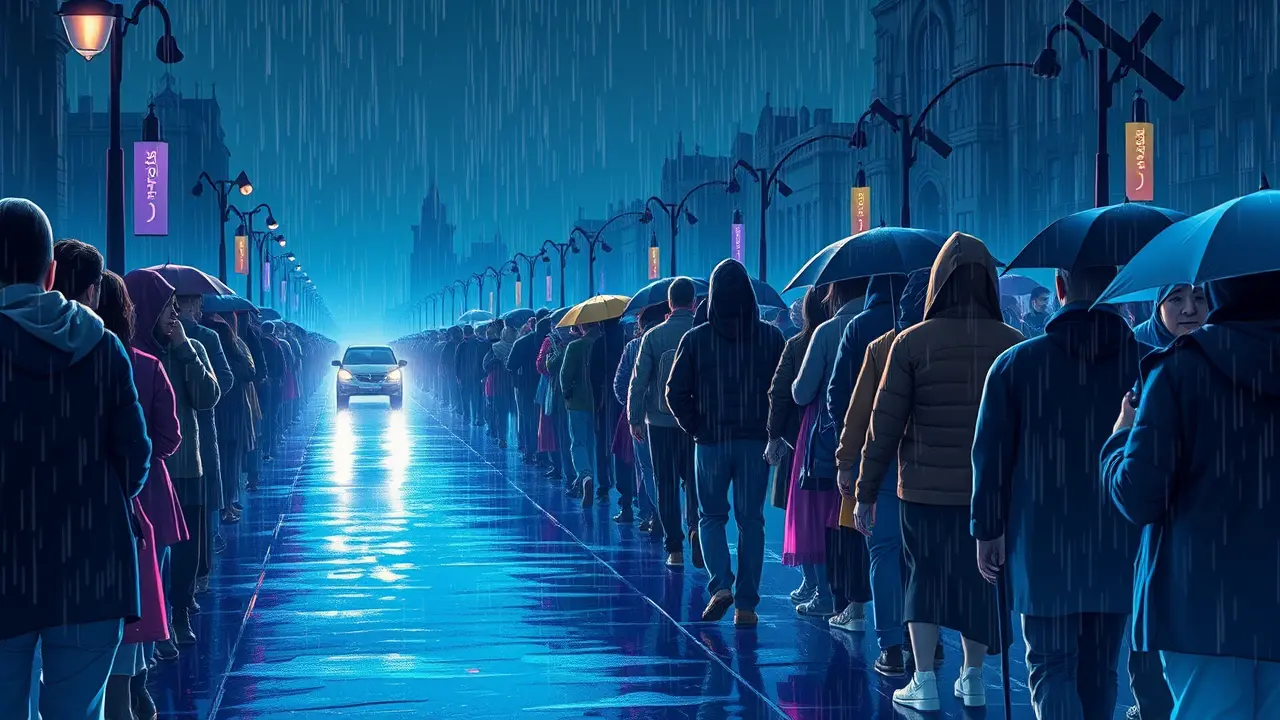Saint Parascheva Pilgrimage in Iași Draws Thousands.
A quiet, persistent rain fell over Iași, but it did little to dampen the profound sense of anticipation that had settled upon the city; instead, the droplets seemed to sanctify the journey, glistening on the shoulders of thousands of faithful who had converged upon the capital of Moldova, their collective breath forming a soft mist in the cool air as they stood in a line of devotion that stretched, almost unbelievably, for nearly two kilometres. This was not merely a queue; it was a river of hope, a slow-moving testament to a tradition that has, for centuries, woven itself into the very fabric of Romanian spiritual life.The pilgrimage to the relics of Saint Parascheva, the beloved protector of Moldova, is an annual event that transcends mere religious observance, becoming a powerful social and cultural phenomenon where the personal and the universal collide. To understand this scene, one must look beyond the raincoats and umbrellas and listen to the stories whispered in the line—the elderly woman clutching a faded photograph of a sick relative, her knuckles white with a mixture of fear and faith; the young couple, hands intertwined, seeking a blessing for their future; the student, eyes closed in silent prayer, grappling with an uncertainty that textbooks cannot solve.Each person carries a private world of worries and aspirations, and here, in this shared, patient waiting, they find a rare communal solace. Saint Parascheva, or 'Cuvioasa Parascheva,' lived in the 11th century, renouncing a life of privilege for one of asceticism and prayer, and her enduring appeal lies in her accessibility—she is a saint of the people, a figure known for her humility and miraculous interventions in everyday struggles.The journey to her relics is as much a pilgrimage inward as it is a physical trek, a deliberate slowing down in a world obsessed with speed, a conscious choice to embrace discomfort for the chance at spiritual clarity. Sociologically, it’s a fascinating leveling mechanism; in that long, damp line, distinctions of wealth, profession, and social status blur into irrelevance, replaced by a shared human vulnerability and a common goal.The atmosphere is not one of somber gloom, but rather a patient, resilient joy—there is laughter that cuts through the drizzle, the sharing of food and water among strangers, the spontaneous singing of hymns that rises above the sound of the weather, creating a palpable tapestry of community. This annual gathering is a powerful reminder that in an age of digital isolation and fragmented identities, the primal human need for connection, both to the divine and to each other, remains a potent force, capable of drawing masses to stand for hours in the rain, not as a crowd, but as a congregation, bound by a faith that is as enduring as the stones of the city itself.
MA
Maya Thorne123k2 days ago
reading this from the year 2099, still relevant tbh the part about the line being a river of hope got me
0
MA
Maya Petrov123k2 days ago
idk there's something really beautiful about thousands of people just choosing to stand together in the rain like that, all hoping for the same basic things tbh
0
